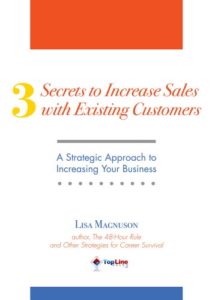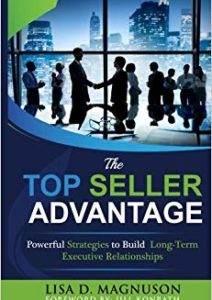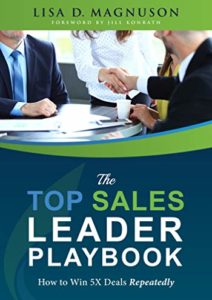(If you haven’t read it, see Sales Process is a Big Deal! (Part One))
A sales process includes all the steps that are taken from the time a prospect indicates interest in a product or service to their acquisition of that product or service and beyond. Sales cycles differ based on various factors such as industry, sales or distribution channel and the nature of the product or service. The notion of the ‘Customer’s buying process’ is a critical perspective. (I.e. Customers are going through a ‘buying process’ as sales people are going through a ‘selling process’ and it’s critical from a sales perspective to be in lockstep with your potential customer.)
We all know that customers have unlimited access to information and they have little time or patience to be ‘sold’. Skilled salespeople help customers clarify their needs and provide the right amount of information, at the right time, to enable the customer to make a good decision. However, when you add competitors, multiple decision makers, complex buying cycles, external pressures and risk to the mix, it gets complicated very quickly.
The steps below offer a simple template including the most common ‘components’ of a strategic sales cycle. After you build your unique sales process, you can analyze important data like close ratios and the average length of the sale cycle.
The sales approach is a careful balance of quality and quantity. It’s important to drive sales activity (quantity) but it’s more important to consistently improve the quality of all sales interactions.
Below is a summary list of the steps (organized in phases) of a typical sales cycle which can be used as a guide.
Phase One: Opportunity is unearthed
- Initial prospect research
- Situational questions are asked and answered
- Fit is determined – qualify opportunity – can you compete?
- A problem or opportunity has been identified
- Customer agrees with problem or opportunity
- Customer has resources and desire to solve problem
Phase Two: Lay the Groundwork
- In depth prospect research
- Gather sales team
- Determine other resources needed
- Develop questions to delve deeper into problem or opportunity
Phase Three: Dig In
- Really dig in to problem or opportunity
- Connect problem or opportunity to business results
- Quantify (gather info for ROI analysis)
- Expansion of customer contacts
- Initial development of strategy
- Gain pre-commitments from customer to continue (next steps)
Clear action items
Phase Four: Plant the Seeds
- Customer’s goals and objectives are well understood
- Lots of customer interactions
- Development of first draft of solution
- Alternatives evaluated
- Decision criteria understood
- Decision process understood
- Executive endorsement secured
- Competitive assessment completed and blocks are in play
- ROI developed and tested with customer
- Strategy development
> Differentiation/Win Themes™ - Evaluate possible risks and threats from customer’s perspective
- Gain pre-commitments from customer to continue (next steps)
- Clear action items
Phase Five: Cultivation: Proposal and/or presentation
- Understand audience and their objectives
- Be clear on desired outcome or next steps
- Connect problem to solution to ROI
- Benefits tie directly to stated needs
- Anticipate questions and objections
- Show ‘evidence’ of past success for similar situation
- Seek internal feedback prior to delivery
- Testing of product or solution
- Gain pre-commitments from customer to continue (next steps)
- Clear action items
Phase Six: Nurture: Commitment to Move Forward
- Address remaining issues
- Customer decision (agreement, contract)
- Move smoothly to next logical step
- Clear action items
Phase Seven: Harvest: Delivery of Service or Product
- Clear communication
- Implementation planning
- Project leadership
- Add resources
- Plan for the unexpected
- Develop key metrics or measurements
- Focus on providing value and customer satisfaction
- Clear action items
Phase Eight: Enjoy the Fruits of your Labors
- Celebration of accomplishment
- Analysis of process
- Process improvements shared and incorporated
- Executive sponsor thank you
- Clear action items
Phase Nine: New Growth and Expansion
- Marketing opportunities – testimonials, press release, case studies, etc.
- Referrals
- Develop expansion plans
- Gather evidence – cost savings, process improvements, ROI actualization
- Customer satisfaction verification
- Executive contact plan developed
- Clear action items
- Recycle to earlier phase
Good luck. You will ‘Ring the Bell’ more often when your sellers follow a customized sales process build on best practices.
Executive Engagement is a Key Part of the Sales Process:
Make sure your executive engagement efforts are working by giving your sellers the book that is guaranteed to enhance their sales performance. The TOP Seller Advantage: Powerful Strategies to Build Long-Term Executive Relationships includes proven strategies to ensure sellers develop long lasting executive access.
Pipeliner CRM empowers companies to precisely evolve and use their sales process. Get your free trial of Pipeliner CRM now.








Comments